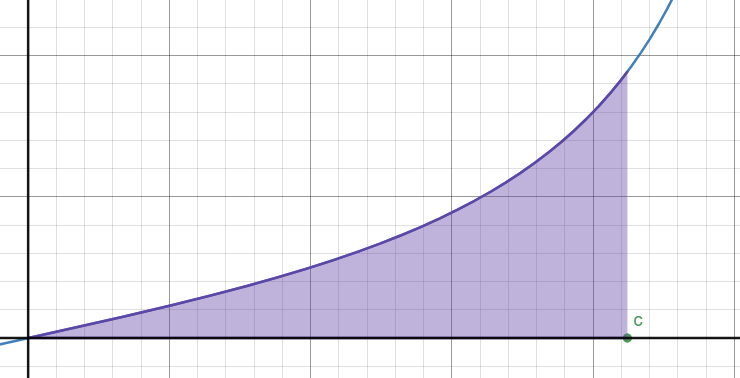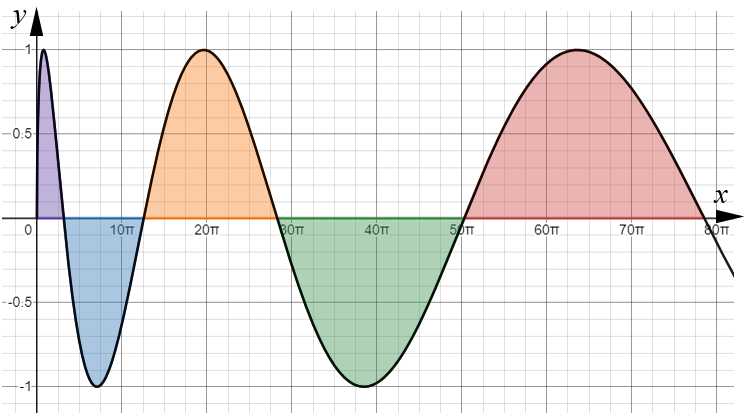
 |
Exam-Style Questions.Problems adapted from questions set for previous Mathematics exams. |
1. | IB Analysis and Approaches |
The diagram below shows part of the graph of \(y = \dfrac{2x}{9-x^2}\)

The shaded region is bounded by the curve, the x-axis and the line \(x = c\)
The area of this region is \(\ln{2}\)
Find the value of \(c\).
2. | IB Analysis and Approaches |
The curve \( y=\sin(\sqrt{x}) \text{ where } x \ge 0 \) intersects the x axis at the points \(x_0, x_1, x_2, x_3, x_4, ... \) and \(x_0 = 0\).
(a) Find \(x_1\), the first x-intercept of the function to the right of the origin. Give your answer in terms of \(\pi\).
(b) Find an expression for the nth x-intercept of the curve, in terms of \(\pi\).
(c) By using an appropriate substitution, show that:
$$ \int \sin(\sqrt{x}) \; dx = 2\sin(\sqrt{x}) - 2 \sqrt{x} \cos(\sqrt{x})$$The area of the region bounded by the curve and the x-axis is denoted by \(R_n\) where:
$$ R_n = \int^{x_{n+1}}_{x_n} y \; dx$$
(d) Calculate the area of region \(R_n\) giving your answer in terms of \(\pi\).
(e) Hence, show that the areas of the regions bounded by the curve and the x-axis, form an arithmetic sequence.If you would like space on the right of the question to write out the solution try this Thinning Feature. It will collapse the text into the left half of your screen but large diagrams will remain unchanged.
The exam-style questions appearing on this site are based on those set in previous examinations (or sample assessment papers for future examinations) by the major examination boards. The wording, diagrams and figures used in these questions have been changed from the originals so that students can have fresh, relevant problem solving practice even if they have previously worked through the related exam paper.
The solutions to the questions on this website are only available to those who have a Transum Subscription.
Exam-Style Questions Main Page
To search the entire Transum website use the search box in the grey area below.